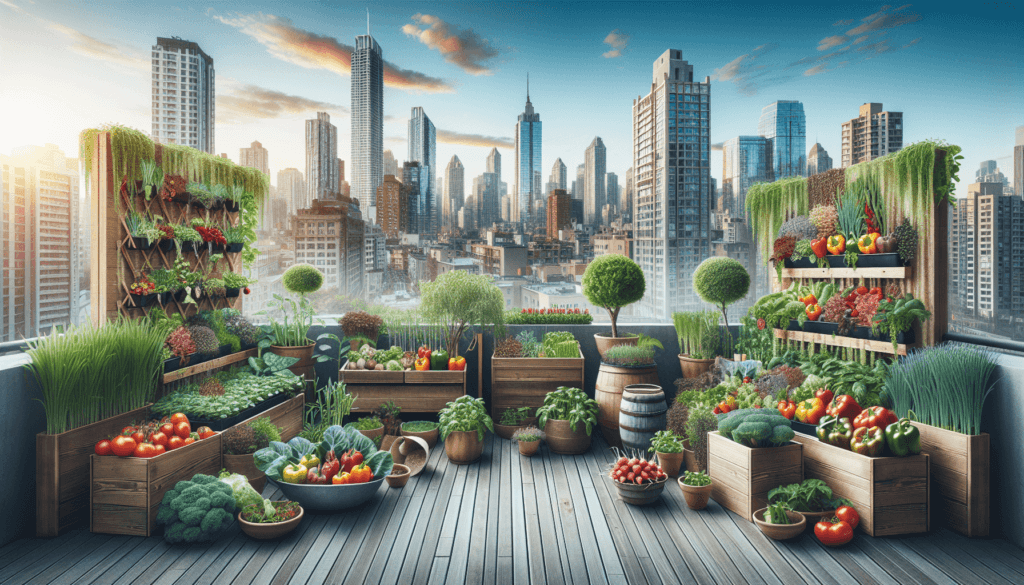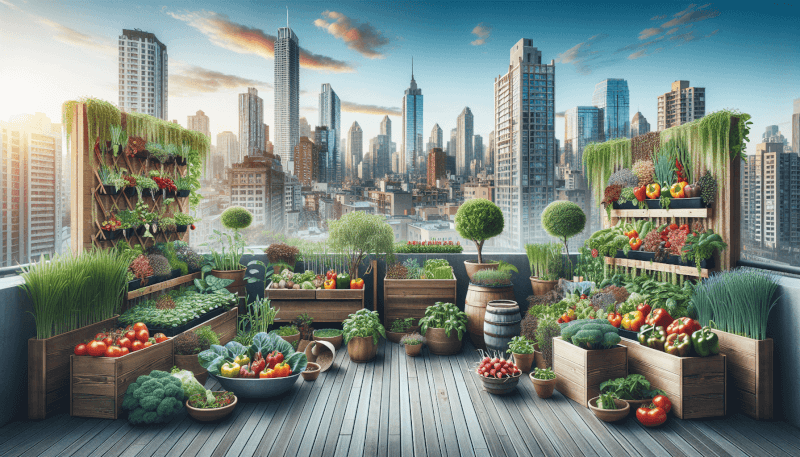Imagine stepping out onto your urban balcony, the warm sun on your face, and the fresh scent of vegetables wafting through the air. With a little bit of creativity and some simple steps, you can transform your small outdoor space into a thriving mini veggie garden. In this article, we will guide you on how to create your very own urban oasis, filled with delicious and nutritious vegetables, right on your balcony. Whether you’re a seasoned gardener or just starting out, these tips and tricks will help you make the most of your limited space and enjoy the joys of homegrown produce. Get ready to embark on a green adventure and bring the farm-to-table experience right to your urban dwelling.
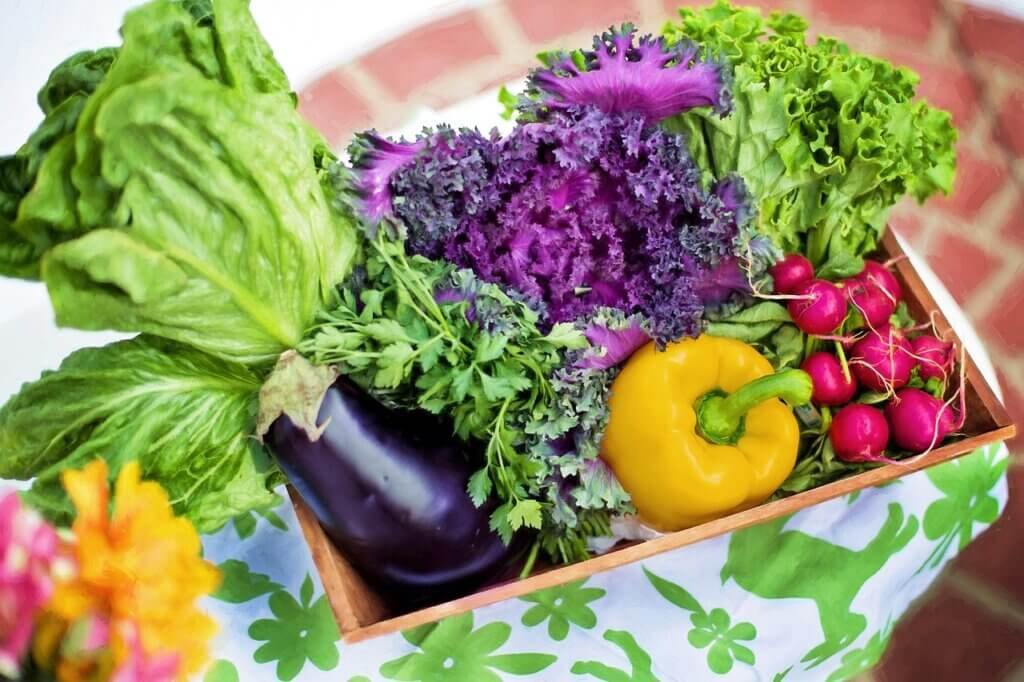
Choosing the Right Location
When it comes to creating a mini veggie garden on your urban balcony, choosing the right location is crucial. First and foremost, you need to consider the amount of sunlight your balcony receives throughout the day. Most vegetables thrive in full sun, so make sure your chosen spot gets at least six to eight hours of direct sunlight.
Another factor to evaluate is the wind exposure. Balconies can be quite windy, which can affect the health and growth of your plants. Consider placing your containers in a spot that offers some protection from strong winds, such as against a wall or in a corner.
Additionally, check for shade from neighboring buildings. While sunlight is essential, excessive heat can also harm your plants. If your balcony gets intense afternoon sun, it may be beneficial to position your containers in a spot that receives some shade during the hottest part of the day.
Lastly, assess the space availability. Measure the size of your balcony and determine how many and what size containers can comfortably fit. Ensure that there is enough space for you to move around and tend to your plants without feeling cramped. Consider vertical gardening techniques if you have limited space but still want to maximize your vegetable yield.
Selecting Suitable Containers
Now that you’ve found the perfect location for your mini veggie garden, it’s time to select suitable containers for your plants. One crucial aspect is to use containers with good drainage. Proper drainage is essential to prevent waterlogging, which can lead to root rot and other fungal diseases. Look for containers with drainage holes at the bottom to ensure excess water can escape.
Consider the size and depth of the containers. Different vegetables have different root systems, so choose containers that are appropriate for the plants you want to grow. For shallow-rooted vegetables like lettuce or herbs, a container with a depth of 6 to 8 inches is usually sufficient. However, deep-rooted plants like tomatoes or peppers may require containers that are 12 to 16 inches in depth.
Opt for lightweight and portable containers, especially if you plan on moving them around. This makes it easier to adjust the position of your plants to optimize sunlight exposure or protect them from strong winds. Materials such as plastic, resin, or lightweight fiberglass are great options that are both durable and easy to handle.
Lastly, ensure that the containers are suitable for balcony use. Some balconies have weight restrictions, so choose containers that are within the allowed weight limit. Consider using hanging baskets or vertical planters to maximize space and reduce the load on your balcony floor.
Choosing the Right Vegetables
Now that you have your containers ready, it’s time to choose the right vegetables for your mini veggie garden. Consider the available sunlight on your balcony. If you have a balcony that receives full sun, you have a wide variety of vegetables to choose from. However, if your balcony is shaded for a significant portion of the day, opt for leafy greens like lettuce, spinach, or Swiss chard, which can tolerate partial shade.
When it comes to container gardening, certain vegetables are better suited than others. Look for compact varieties that don’t require a lot of space to flourish. Some excellent choices include cherry tomatoes, peppers, radishes, green beans, and herbs like basil, parsley, or thyme. These plants can thrive in containers and don’t spread extensively, making them ideal for smaller spaces.
Make sure to select varieties that are suitable for your mini veggie garden’s small space. Look for dwarf or bush varieties that have been bred specifically for container gardening. These varieties tend to have more compact growth habits and produce a bountiful harvest without taking up too much space.
Consider the climate and weather conditions of your area when choosing vegetables for your urban balcony garden. Some vegetables, like lettuce and spinach, thrive in cooler temperatures, while others, like peppers and tomatoes, prefer warmer climates. Take into account the average temperatures and the length of your growing season to select vegetables that are well-suited for your specific conditions.
Preparing the Containers
Before planting your vegetables, it’s essential to prepare the containers properly. Start by cleaning the containers thoroughly. Wash them with warm soapy water and rinse them thoroughly to remove any dirt or debris that may harbor pests or diseases. This step helps promote a healthy growing environment for your plants.
If your containers don’t have drainage holes, consider drilling them yourself. Drainage holes allow excess water to escape, preventing waterlogging and the potential for root rot. Use a drill with a bit suitable for the material of your container and ensure the holes are evenly spaced at the bottom.
Adding a layer of gravel or broken pottery at the bottom of the containers can further improve drainage. This layer acts as a barrier between the potting mix and the drainage holes, preventing them from clogging. Ensure the layer is about one to two inches thick, but don’t overdo it, as too much can obstruct the drainage.
Fill the containers with appropriate potting mix. Avoid using garden soil, as it tends to be too heavy and may not provide the proper drainage and aeration your plants need. Instead, opt for a high-quality potting mix specifically formulated for container gardening. These mixes are lightweight, well-draining, and rich in nutrients to support the healthy growth of your vegetables.
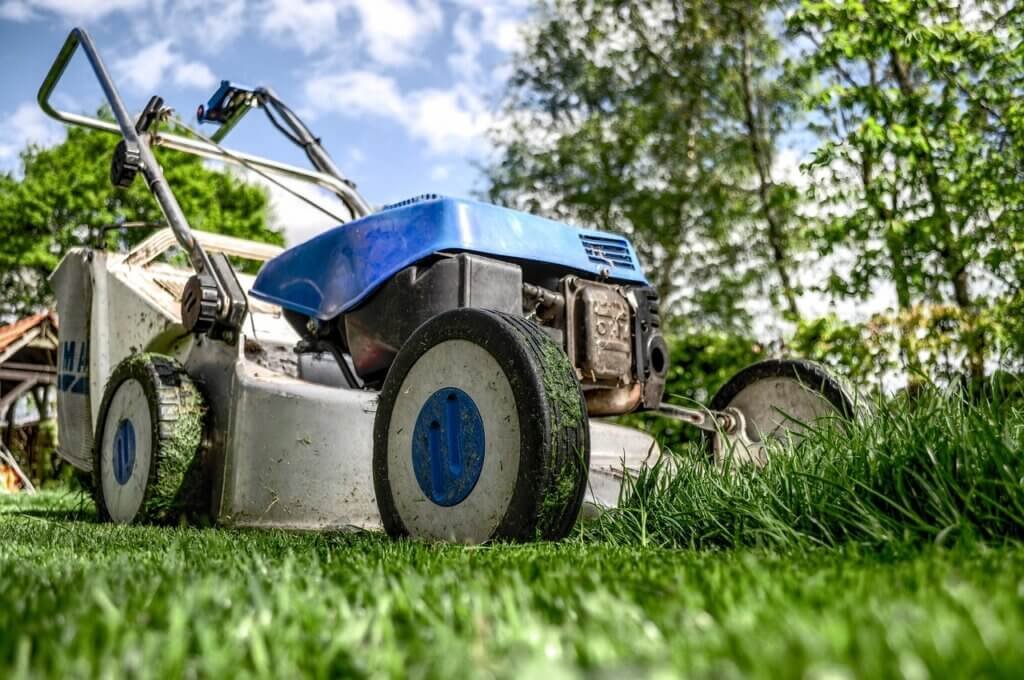
Planting the Vegetables
With your containers prepared, it’s time to plant your vegetable seeds or seedlings. You can either sow the seeds directly in the containers or start with pre-grown seedlings. Sowing seeds directly offers a more cost-effective approach, while starting with seedlings gives you a head start.
Follow the recommended spacing for each vegetable. Proper spacing ensures that each plant has enough room for its roots to grow and allows for good air circulation, reducing the risk of diseases. Overcrowding can lead to stunted growth and competition for nutrients, so give your plants enough space to thrive.
After planting, water the plants thoroughly to help them settle into their new environment. Be gentle while watering to prevent disturbing the soil or dislodging the seeds. Use a watering can or a gentle spray from a hose, ensuring that the water reaches the roots without causing erosion or damage.
To keep track of the vegetables you planted in each container, label them. This simple step helps you remember what you planted, especially if you’re growing different varieties. Use weather-resistant labels or markers to avoid them fading over time.
Providing Adequate Watering
Water is vital for the health and growth of your vegetable plants, so it’s important to provide them with adequate hydration. Regularly water the plants, especially during hot and dry periods. Containers tend to dry out more quickly than in-ground gardens, so keep an eye on the soil moisture levels.
Check the moisture level of the soil by sticking your finger about an inch deep into the potting mix. If it feels dry, it’s time to water. If it feels moist, hold off on watering for a few more days. The goal is to keep the soil evenly moist but not saturated. Inconsistent watering can lead to various issues, including blossom-end rot and stunted growth.
Use a watering can or a hose with a gentle spray attachment to avoid overwatering or damaging the plants. Direct the water near the base of the plants, aiming for the soil rather than the leaves. Wet foliage can make the plants more susceptible to diseases, so it’s best to keep the leaves dry whenever possible.
Consider using a self-watering system to make watering more convenient and efficient. These systems have reservoirs that provide a steady supply of water to the plants, reducing the risk of under or overwatering. Self-watering containers or incorporating a wicking system into your existing containers can help maintain consistent moisture levels and minimize the time you spend watering.

Fertilizing the Plants
To ensure your vegetable plants receive the necessary nutrients for healthy growth, it’s important to fertilize them properly. Use organic fertilizers suitable for container gardening, as they are gentle on your plants and environmentally friendly. Organic fertilizers release nutrients slowly, providing a steady supply of nourishment.
Apply fertilizers according to the recommended dosage specified on the product packaging. Overfertilizing can lead to nutrient burn and may harm your plants. Follow the instructions carefully to avoid any potential damage. Regular fertilization every four to six weeks during the growing season is usually sufficient for most vegetables.
Consider using slow-release or liquid fertilizers for convenient and consistent feeding. Slow-release fertilizers gradually release nutrients over an extended period, reducing the frequency of application. Liquid fertilizers, on the other hand, are quickly absorbed by the plants, providing an instant boost of nutrients.
Avoid fertilizing when the soil is dry, as it can lead to fertilizer burn. Water the plants thoroughly before application to ensure the nutrients are properly absorbed by the roots. Additionally, fertilize your plants in the morning or late afternoon to prevent the fertilizer from sitting on the foliage during the hot midday sun.
Managing Pests and Diseases
Keeping your mini veggie garden free from pests and diseases is essential for overall plant health and productivity. Regularly inspect your plants for signs of pests or diseases. Common pests that may affect container gardens include aphids, whiteflies, snails, and slugs. Look for chewed leaves, yellowing foliage, or visible insects on your plants.
If you notice any infected or damaged plants, remove them promptly to prevent the spread of diseases. Prune any affected leaves or branches and dispose of them properly. This helps contain the problem and protects the rest of your garden from the infestation.
When possible, opt for organic pest control methods. Natural remedies such as neem oil, insecticidal soaps, or homemade sprays can effectively control pests without harming the environment or beneficial insects. Introduce beneficial insects like ladybugs or lacewings to your garden, as they help control common pests naturally.
Consider companion planting to repel pests and enhance plant health. Certain plants have natural properties that deter pests when grown together. For example, planting marigolds alongside your vegetables can repel aphids and other harmful insects. Do some research on companion planting and choose combinations that work well with your chosen vegetables.
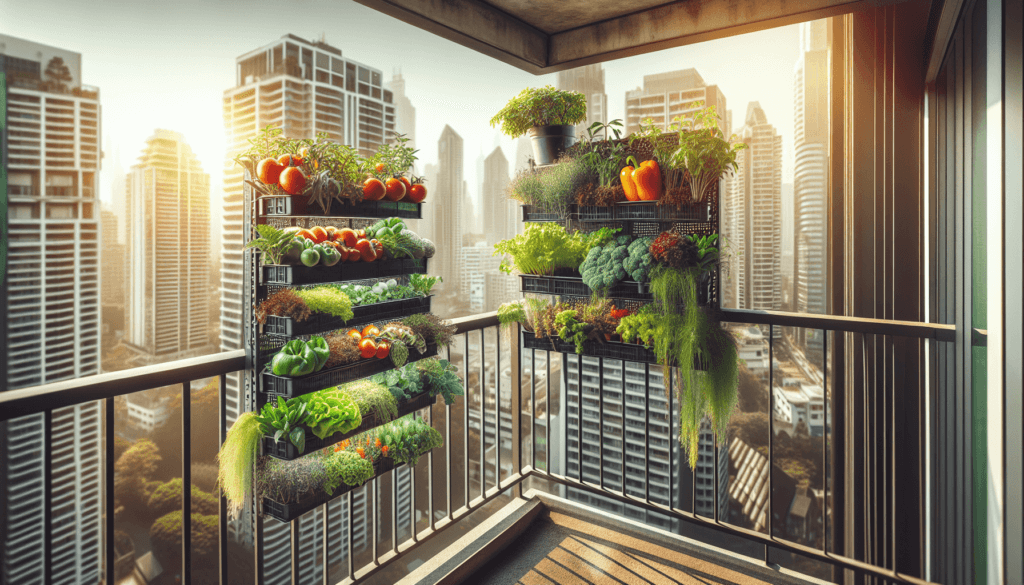
Pruning and Harvesting
Pruning is an essential part of maintaining the health and productivity of your mini veggie garden. Trim off dead or yellowing leaves regularly to promote better overall plant health. Removing these leaves helps prevent the spread of diseases and also allows the plant to channel its energy towards producing healthy new growth.
In addition to removing unhealthy foliage, you can also pinch off the tips of certain plants to promote bushier growth. This technique is often used for herbs like basil, where regular pinching encourages the plant to produce more branches and leaves. Pinching also prevents the plant from becoming too tall and lanky.
Harvest your vegetables when they are ripe for the best flavor and nutritional value. Each vegetable has different indicators of ripeness, so refer to specific guidelines for each crop. Generally, vegetables like tomatoes, peppers, and beans should be harvested when they are firm and fully colored. Leafy greens like lettuce and spinach can be harvested when the leaves are tender and before they start to turn bitter.
When harvesting, be careful not to damage the remaining plants. Use clean, sharp pruners or scissors to cut the vegetables cleanly from the plant. Avoid pulling or twisting the vegetables, as this can damage the stems or roots. Handle the harvested vegetables with care to avoid bruising or other physical damage.
Maintaining the Mini Veggie Garden
Maintaining your mini veggie garden is an ongoing process that requires regular monitoring and care. Keep an eye on the plants for any signs of stress, nutrient deficiencies, or pests. An unhealthy plant may exhibit drooping leaves, yellowing foliage, or stunted growth. Address any issues promptly to prevent further damage to your plants.
Provide support for taller plants if necessary. Some vegetables, such as tomatoes or cucumbers, require additional support as they grow. Stake or cage these plants to prevent them from falling over or breaking under their weight. Proper support ensures that your plants grow upright and reduces the risk of damage or disease.
Rotate your vegetable crops to prevent nutrient depletion and the buildup of pests or diseases. Changing the planting location of your vegetables from year to year can help break pest and disease cycles. It also allows the soil to replenish essential nutrients, resulting in healthier plants and more productive harvests.
Remove weeds regularly to maintain the health and appearance of your garden. Weeds compete for nutrients and water, which can negatively affect the growth of your vegetable plants. Pull weeds by hand, making sure to remove the roots to prevent them from regrowing. Keeping your mini veggie garden tidy also reduces hiding spots for pests and diseases.
By following these steps and giving your mini veggie garden the care and attention it needs, you can enjoy a bountiful harvest right on your urban balcony. From choosing the right location and containers to planting, watering, fertilizing, and managing pests, each step plays a crucial role in the success of your balcony garden. With a little dedication and patience, you can experience the joys of homegrown vegetables even in a limited space. Happy gardening!
